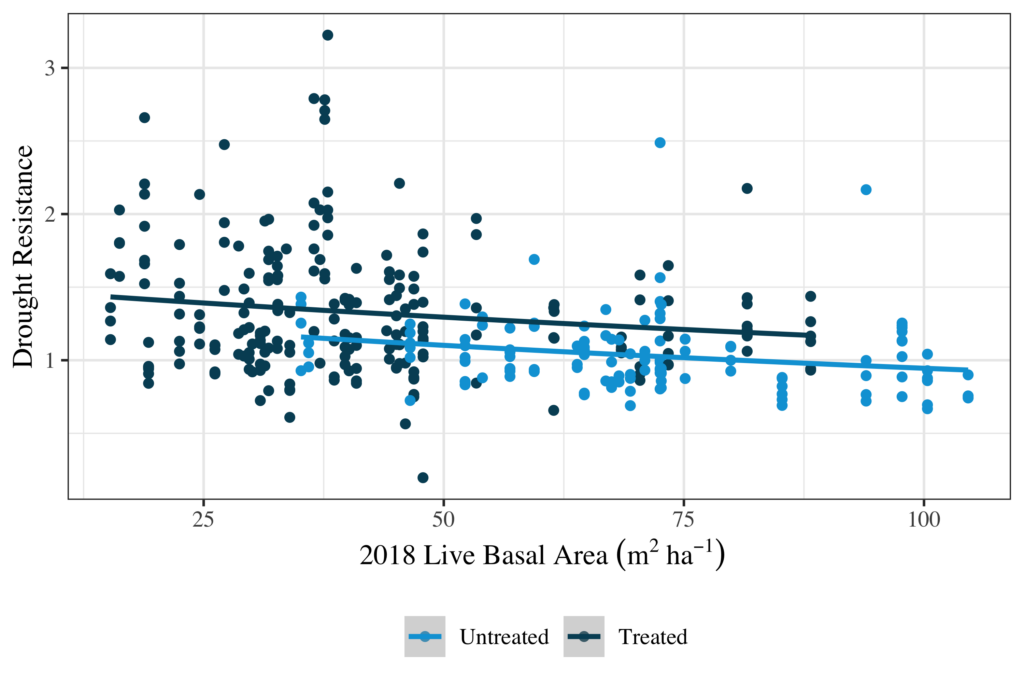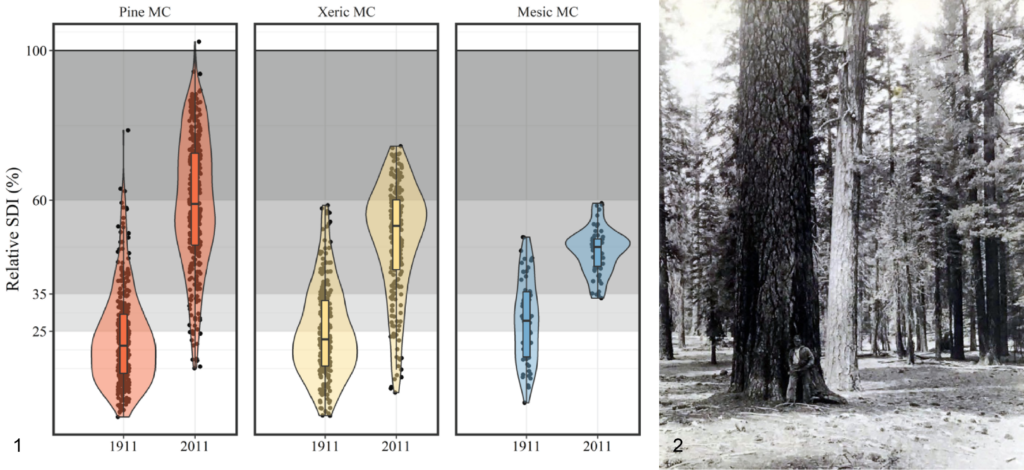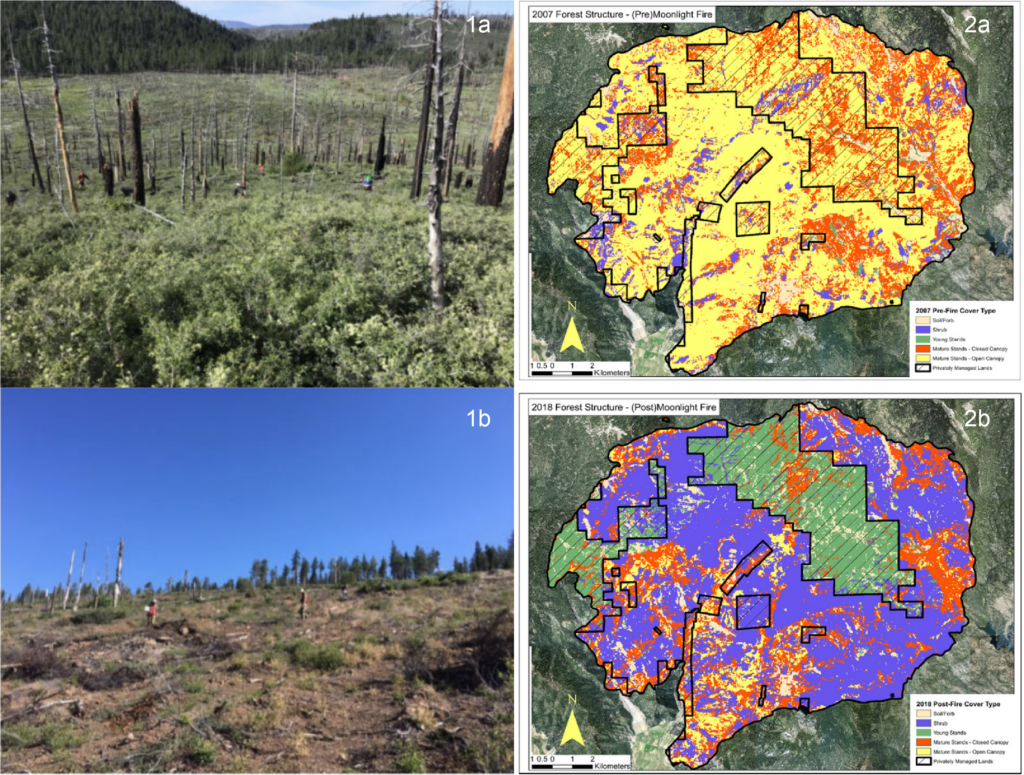We strive to provide high quality research and outreach focused on forest and wildland fire management. Our research aims to understand how fire influences forest ecosystems and how management in these ecosystems influences fire and forest health. Generally, our research can be divided into four key themes:
Drivers of landscape-level fire and vegetation dynamics

Fire-vegetation interactions are highly contextual, in that effects within individual fire events are a product of the specific vegetation/fuel complexes encountered, topographic setting, weather, fire suppression efforts, and feedbacks from the fire itself. This array of influences can result in highly unique individual fire events, making it difficult to identify common drivers. This research uses spatial and temporal data to distill the underlying processes driving both fire effects and vegetation responses across landscapes.
Highlighted Papers
Steel, Z. L., D. E. Foster, M. Coppoletta, J. M. Lydersen, S. L. Stephens, A. Paudel, S. H. Markwith, K. Merriam, and B. M. Collins. 2021. Ecological resilience and vegetation transition in the face of two successive large wildfires. Journal of Ecology 109: 3340-3355.
Levine, J. I., B. M. Collins, Z. L. Steel, P. de Valpine, and S. L. Stephens. 2022. High-severity fire incidence higher both on and near industrially managed forests. Frontiers in Ecology and Environment in press.

Long-term effects of forest restoration and fuel reduction treatments

The near-term effects of treatments on forest structure, surface fuels, and understory vegetation are fairly well understood. Longer-term (>10 yr) effects are comparatively lacking. This research focuses on field data collection in areas with longer-term treatment history (and ideally prior field data collection) to characterize change over time. Additionally, this work seeks to assess how treatments influenced forest responses to subsequent disturbance and drought.
Highlighted Papers
Low, K. E., B. M. Collins, A. Bernal, J. E. Sanders, D. Pastor, P. N. Manley, A. M. White, and S. L. Stephens. 2021. Longer-term impacts of fuel reduction treatments on forest structure, fuels, and drought resistance in the Lake Tahoe Basin. Forest Ecology and Management 479:118609. PDF. Research Brief.
Collins, B. M., S. L. Stephens, and R. A. York. 2019. Perspectives from a long-term study of fuel reduction and forest restoration in the Sierra Nevada. Tree Rings 29:7-9. PDF.

Historical ecology of forests adapted to frequent fire

Information on forest conditions prior to implementation of fire suppression/exclusion policies and widespread timber harvesting provides insight into how forests persisted through natural disturbances and climate fluctuations. Forest managers often use this historical information to assess departure of current forests and, where necessary, develop prescriptions for forest restoration. However, it is worth noting that the reconstructed historical forest conditions are not intended to serve as a blueprint for restoration. Rather, they offer guidance on the range of forest conditions that would allow forest to persist and adapt to contemporary fire and climate dynamics.
Highlighted Papers
North, M. P., R. E. Tompkins, A. A. Bernal, B. M. Collins, S. L. Stephens, and R. A. York. 2022. Operational resilience in western US frequent-fire forests. Forest Ecology and Management 507: 120004. PDF. Research Brief.
Collins, B. M., A. Bernal, R. A. York, J. T. Stevens, A. Juska, and S. L. Stephens. 2021. Mixed-conifer forest reference conditions for privately owned timberland in the southern Cascade Range. Ecological Applications 31: e02400. PDF.

Managing frequent-fire forests following stand-replacing fire

Stand-replacing fire effects (also known as high severity) are increasing in many forest types that were historically adapted to frequent fire. This is particularly concerning in these forests because they are dominated by tree species that lack direct mechanisms for establishment following stand-replacing fire (e.g., vegetative re-sprouting or seed stored in serotinous cones). Short-interval reburns following stand-replacing fire are also increasing in these forests, leading to additional concern over potential long-term forest loss. This research seeks to inform management strategies for reforestation and persistence of young forests through subsequent disturbance and drought.
Highlighted Papers
Moore, I. B., B. M. Collins, D. E. Foster, R. E. Tompkins, J. T. Stevens, and S. L. Stephens. 2021. Variability in wildland fuel patches following high severity fire and post-fire treatments in the northern Sierra Nevada. International Journal of Wildland Fire 30: 921-932. PDF. Research Brief.
Stephens, C. W., B. M. Collins, and J. Rogan. 2020. Land ownership impacts post-wildfire forest regeneration in Sierra Nevada mixed-conifer forests. Forest Ecology and Management 468: 118161. PDF.
